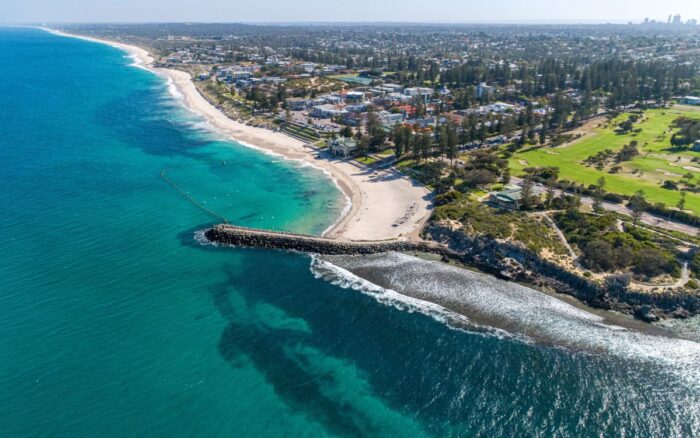The Outlook for Property Investors In The 2026 Financial Year
Published
July 1, 2025
Published
July 1, 2025

We’ve seen a lot in the last year. Interest rates have finally started their trip south, property prices across the country continue to rise and the influences of overseas tariffs, wars and fiscal decisions seem to have made more waves across headlines than they have across our economic landscape. If there wasn’t enough to talk about in the 2025 financial year, welcome to 2026.
This year we’ll undoubtedly see more price shifts in our commercial and residential property markets. Almost every expert worth their salt is tipping an imminent interest rate drop as accountants’ calendars are reset—with many more to come. And with all that’s going on overseas, there’s likely just as many domestic policy changes set to impact our property markets.
Let’s unpack it all, in this, our first blog post of the 2026 financial year. We’ll start, of course, with the residential market.
Skip to:
Is 2026 the year residential prices hit the ceiling?

It’s hard to answer when affordability seems to be completely non-existent—but demand remains, supply is strangled and interest rates pour fuel on the market’s already roaring fire.
Domain forecasts house price growth across all capitals in FY26, with expected rises of 6 per cent in both Sydney in Melbourne.
Perth is expected to see a slowdown in value growth, but this is perhaps conjecture from east coast-biased commentators. Not to say that Perth won’t see a ceiling in 2026—but the continued population growth and supply and demand pressures say that there’s probably a little bit to go before we see any sort of value ceiling hit.
If you’re noticed more builds in your area, you’re not imagining it. But that doesn’t mean construction costs have eased. The opposite is said to be true, with the latest Australian Construction Market Conditions Report from leading advisory firm WT indicating that recent momentum in the construction sector is likely to carry throughout 2025, with national average cost escalations forecast at 5.3 per cent for building and 5.1 per cent for infrastructure.
Low rental vacancy rates and strong net overseas migration are expected to continue fuelling demand into the 2026 financial year. So, if you’re looking to buy, expect to see continued competition at home opens. If you’re looking to sell, then ensure you have a wise destination for the capital gains you’ve likely accrued from several years of ownership during a robust time of residential value growth.
Industrial and CBD retail drive commercial property gains

Industrial remains a leader in the commercial property game, and it’s expecting demand for high-quality assets in major precincts like Sydney and Brisbane will pick up during the year. Interest rate cuts will fuel the appetite for investors looking to deploy capital into core markets, and that’s not just in the industrial space.
Over here in the west, interest is picking up for well-positioned assets in the retail space. That’s right, retail led the way for price growth in Perth’s commercial property market over the year to March 2025, according to the latest figures from REIWA. The median sale price per square metre in the retail sector reached $5,238 by the end of March—marking a 23.8 per cent annual increase and a 6.3 per cent rise compared to the year ending December 2024.
It appears the reduced yields in the industrial market have prompted investors to look to retail. Whether that large format, inner-city department stores or fast food chains in prime locations, there are opportunities out there for the savvy investor to secure long-term value out of retail.
Office markets are expected to recover more slowly, and how they perform will depend on the type, location and quality of the building. But there aren’t many new office projects in the pipeline, because property values are too low and rents aren’t high enough to make new developments financially worthwhile. We picked it a few years back, seeing greenshoots appear in Perth’s CBD office market.
Now, with the supply pipeline diminished, you could do worse holding a high-quality office asset in an excellent city-bound location.
Rate cuts are on everyone’s lips

We’ve already had two rate cuts in 2025. And by the time you’ve found this article, you might’ve seen a third (or more). Two to three more are expected before year-end, perhaps bringing the cash rate as low as 3 per cent.
This will of course lift investor confidence. Even the discussion of further rate cuts will fuel investor optimism and will reshape the math on affordability and investment outlooks for many. More buyers in the market, more plans for larger investments, thoughts of building, expectations of rising property prices—all of these will inevitably go hand-in-hand with more rate cuts.
Government schemes could shift buying behaviour
A range of new housing support programs kicked in this financial year, like expanded Home Guarantee tiers, shared equity pilots and build-to-rent tax changes.
Most of these are aimed at helping first-home buyers, but they’ll likely have flow-on effects for investors too. With more people able to get into the market at the lower end, we could see extra competition for affordable homes, especially in growing regional areas.
It’s worth keeping an eye on how these changes affect demand—and how long they’ll stay in place. The move toward shared ownership models could also shape how new developments are planned and sold. Times have changed since Australia’s housing was truly recognised as being in crisis—expect more schemes such as these, with, of course, varying success.
Sellers are getting in early
Some of the bigger property groups around the country have started quietly selling off older or non-core assets. Why? Because market sentiment is picking up and prices are still strong—meaning that for some institutional investors and funds (with a strict mandate) now appears a good time to sell.
Whether this is too early will be a question going unanswered for potentially years. But it’s a good lesson for every investor out there—evidence-backed decisions and thinking several steps ahead is a smart way to play the property game.
The 2026 financial year has just begun, and with undoubtedly plenty of major events on the political, economical and market landscapes to come, we won’t be quiet on our blog.
Don’t want to miss an article? Then subscribe to receive our monthly newsletter. It features all the best blog posts of the month, leveraging our nous on the property and finance markets to help guide you along your investment journey.
We never spam you and you can unsubscribe anytime. Just click here, fill in your email address and we’ll deliver you the very next one.






